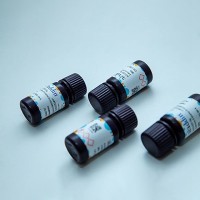The GTPase Cycle How Dominant Inhibitory Mutants Block the Biological Functions of Small GTPases
互联网
375
There are two key methods which yield information about the cellular function of a protein. One can introduce into cells or whole organisms a form of the protein that is constitutively active, and which therefore functions independent of the normal regulatory mechanisms. This technique has been used very successfully with many small GTPases and is based largely on the early work on “natural” Ras mutants (associated with cancers), which were found to contain amino-acid substitutions predominantly at residues 12 and 61 of Ras (1). Although introducing GTPases with such mutations can reveal dramatic effects on cell signaling, membrane trafficking, or cytoskeletal architecture, this method must be complemented by a second technique-studying the loss of protein function. This method can be introduced by genetic manipulation, anti-sense DNA/RNA, specific antibodies, drugs, or expression of so-called “dominant inhibitory” proteins. These proteins have emerged as popular tools to accomplish GTPase inhibition in mammalian cells; mutated proteins can interfere with the function of their normal cellular counterparts or with the proteins that interact with them. This approach has been used extensively in the elucidation of signal-transduction cascades involving Ras-superfamily proteins. This chapter examines the mechanism underlying such dominant-inhibitory Ras proteins and some potential problems associated with their use.









